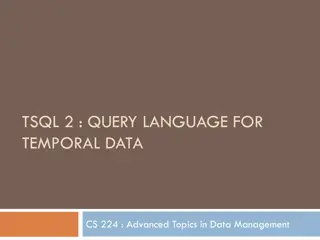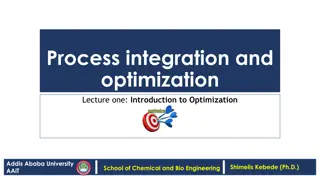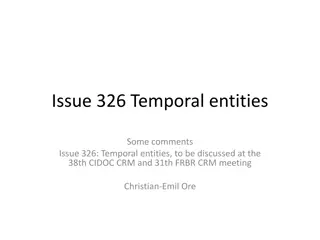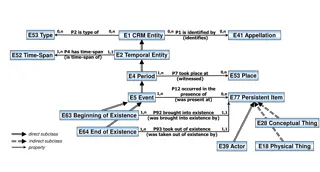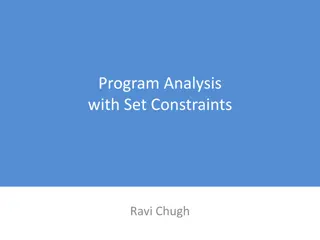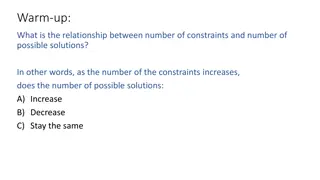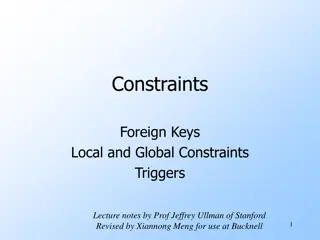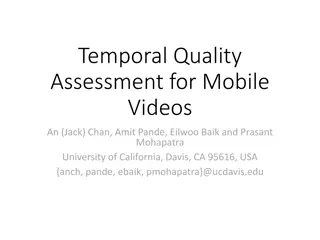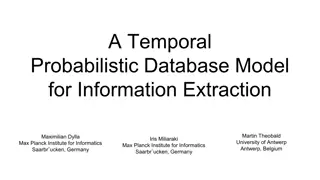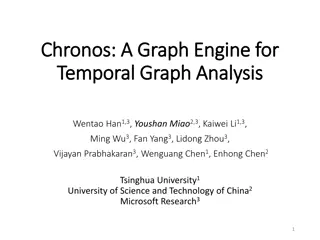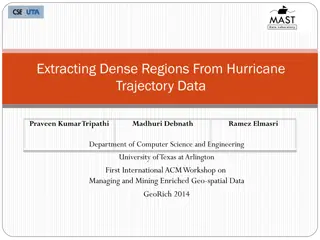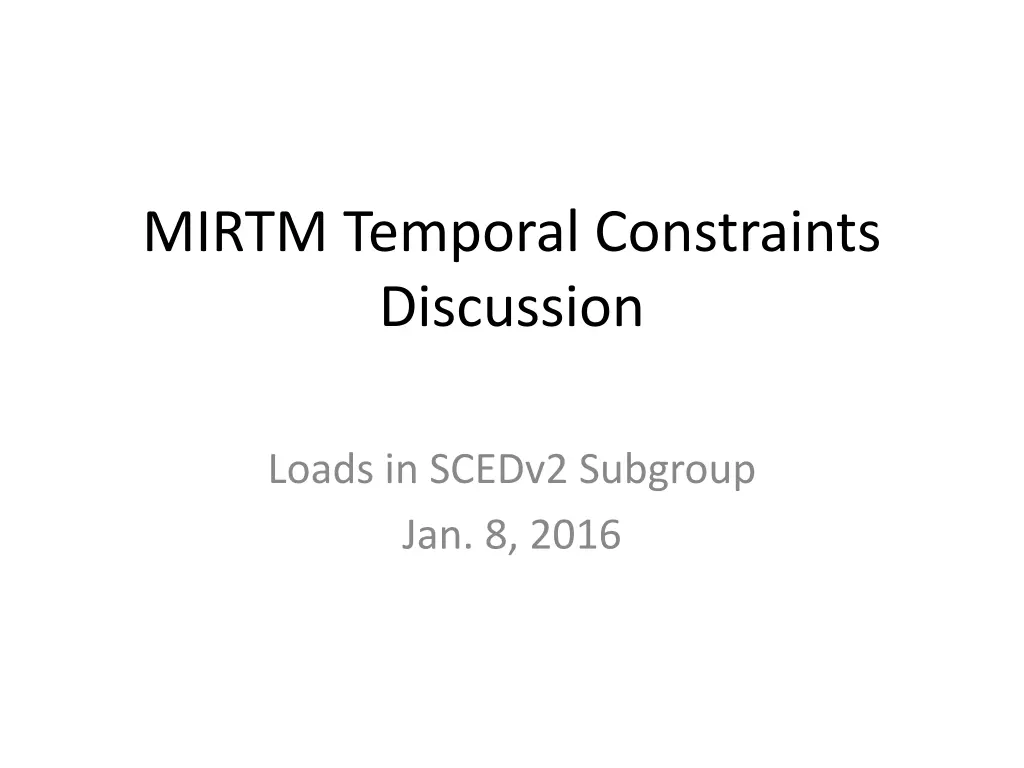
Real-Time Market Enhancements for Load Resources in SCEDv2 Subgroup
"Explore the potential impact of Multi-Interval Real-Time Market on SCED commitments and resource participation. Learn about temporal constraints, key elements, and load resource inputs for better market simulations."
Uploaded on | 0 Views
Download Presentation

Please find below an Image/Link to download the presentation.
The content on the website is provided AS IS for your information and personal use only. It may not be sold, licensed, or shared on other websites without obtaining consent from the author. If you encounter any issues during the download, it is possible that the publisher has removed the file from their server.
You are allowed to download the files provided on this website for personal or commercial use, subject to the condition that they are used lawfully. All files are the property of their respective owners.
The content on the website is provided AS IS for your information and personal use only. It may not be sold, licensed, or shared on other websites without obtaining consent from the author.
E N D
Presentation Transcript
MIRTM Temporal Constraints Discussion Loads in SCEDv2 Subgroup Jan. 8, 2016
Background The Multi-Interval Real-Time Market (MIRTM) would lengthen the time horizon for SCED commitment and dispatch This would open SCED to Resources that are otherwise unable to participate in the RTM, such as: Blocky Load Resources, and/or Resources with Temporal Constraints Jan. 8, 2016 2
Temporal Constraints Four values (in minutes) associated with Load Resources demand response: Ramp Period (time needed from dispatch to response) Minimum down time (minimum time of response) Maximum down time (maximum time able to respond) Return to Service time (time needed to be available for re-dispatch after recall) Note: terminology not set in stone Potentially these values could be established in the LRARF, but subject to modification via real- time telemetry Jan. 8, 2016 3
Key elements Ramp Period + Minimum Down Time must be MIRTM time horizon For example, 30 minutes (or 6 SCED runs) This means (one-part) bid/offer price should allow the LR to recover its opportunity cost within the Minimum Down Time window LR would not be dispatched beyond its Maximum Down Time LR would not be subject to re-dispatch until Return to Service Time has elapsed Jan. 8, 2016 4
Key elements LR would be eligible for make-whole payment if the forecasted price that triggered the commitment failed to materialize in real-time Make-whole payment may apply only to the Minimum Down Time window this is TBD Jan. 8, 2016 5
Appendix The following slides were presented to DSWG on March 9, 2015
Load Resource Inputs to the Multi-Interval Real-Time Market ERCOT is requesting input from LRs and QSEs to enable running meaningful MIRTM simulations
Background Loads in SCED v2 Subgroup seeks to simulate MIRTM behavior with participation by LRs Blocky LRs not capable of responding to incremental SCED base points and/or with temporal constraints Growth in residential DR due to enabling technology (smart meters, smart thermostats, etc) LRs and QSEs are asked to submit best-estimate inputs for bid/offer prices and temporal constraints Multiple scenarios OK Submitters will be known only to ERCOT All data will be anonymized for simulated market runs Jan. 8, 2016 8
Background Under MIRTM, the real-time market would be able to commit Resources at future intervals (beyond the current 5-minute SCED) If the Resource s bid/offer price failed to materialize in real time at their commitment interval, the Resource would be eligible for a make- whole payment One objective of this exercise is to get an idea whether uplifts associated with make-whole payments would exceed the market benefits of additional RTM competition Jan. 8, 2016 9
LR inputs requested DESCRIPTION VALUE INPUT Energy curtailment price (minimum real-time energy price that the LR would curtail consumption based on the minimum curtailment duration) $/MWh DR Quantity (Curtailable MWs available now [2015]) MW Ramp period (duration needed to reach full curtailment a.k.a. notification period ) minutes Minimum curtailment duration (a.k.a., minimum down time ) minutes Maximum curtailment duration(a.k.a., maximum down time ) minutes Post recall unavailability duration (a.k.a., return to service time ) minutes And for future consideration . Future DR Quantity (Curtailable MW expected to be available in 2018) MW Jan. 8, 2016 10
Example to assist in preparing input data (1) LR s assumptions & bid/offer parameters: DR capacity 10 MW Fixed cost of curtailment $2,000 Running cost of curtailment $500 per hour Minimum curtailment duration 15 minutes Maximum curtailment duration 2 hours Post-recall unavailability (return-to-service time) 1 hour Jan. 8, 2016 11
Example to assist in preparing input data (2) Based on the data from slide #5: If LR wants to recover curtailment cost based on minimum curtailment duration (15 min.): Cost = $2,000 (fixed) + 1.25 * $500 (hourly) = $2,625 (where 1.25 = 15-minute deployment + 1 hour return to service) $2,625 * 4 / 10 = $1,050/MWh (where multiplying 15-minute min. duration by 4 = hourly; dividing by 10 = per MW) Jan. 8, 2016 12
Example to assist in preparing input data (3) Based on the data from slide #5: If LR wants to recover curtailment cost based on maximum curtailment duration: Cost: $2,000 (fixed) + 3.0 * $500 = $3,500 (where 3.0 = 2-hour deployment + 1 hour return to service) $3,500 / 10 = $350/MWh So, this LR s cost recovery range would be: >$350/MWh to $1,050/MWh Jan. 8, 2016 13
Example LOAD MW Ramp period Post recall unavailability duration DR MW Quantity (bid/offer) Min duration Max duration TIME Curtailment deadline MIRTM Recall instruction LR available for next MIRTM commitment MIRTM commitment instruction Jan. 8, 2016 14
Request to LRs and QSEs Please populate cells in the right-hand column on the following slide(s) Submit as many scenarios as you like To ensure apples apples, please assume the following for cost calculation (if used): Natural gas: $3.00 per MMBtu Diesel fuel: $2.75 per gallon Also, assume participation is energy-only capacity in MIRTM not carrying AS responsibility Please email populated tables by Fri., March 27, to paul.wattles@ercot.com and sainath.moorty@ercot.com Thanks! Jan. 8, 2016 15
LR inputs requested DESCRIPTION VALUE INPUT Energy curtailment price (minimum real-time energy price that the LR would curtail consumption based on the minimum curtailment duration) $/MWh DR Quantity (Curtailable MWs available now [2015]) MW Ramp period (duration needed to reach full curtailment a.k.a. notification period ) minutes Minimum curtailment duration (a.k.a., minimum down time ) minutes Maximum curtailment duration(a.k.a., maximum down time ) minutes Post recall unavailability duration (a.k.a., return to service time ) minutes And for future consideration . Future DR Quantity (Curtailable MW expected to be available in 2018) MW Jan. 8, 2016 16

